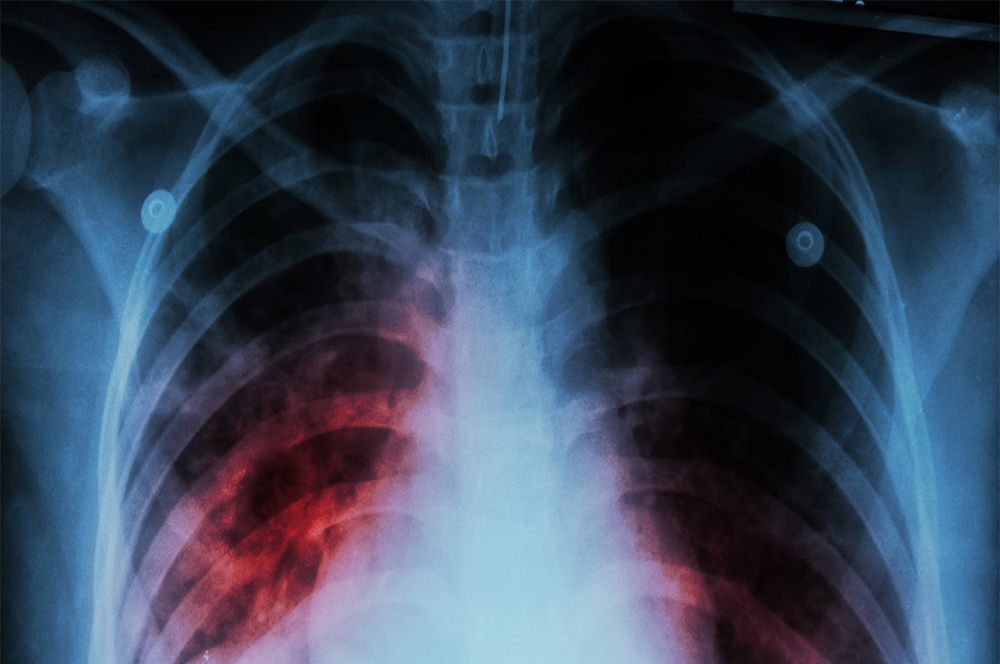As a 32-year-old financial consultant in Manhattan, with plans to propose to his girlfriend, Nauman used to be at the top of his game. Then, a few years ago, he felt a twinge in his right lung. Soon enough, he was suffering from night sweats and diarrhea, and coughing up coagulated blood. After testing positive for tuberculosis, he started a six-month regimen of four medications before it was revealed that he had multidrug-resistant tuberculosis, or MDR-TB. “My heart went into my stomach,” says Nauman, whose doctors prescribed more potent antibiotics that left him fatigued, with hearing problems and acid reflux. He spiraled into depression and broke up with his girlfriend.
Nauman finished his treatment last year, and despite some lung scarring and lingering depression, he counts himself lucky: About half of MDR-TB patients don’t respond to treatment. But MDR-TB is only one of many infections that have evolved resistance to antibiotics over the years, claiming an estimated 700,000 lives worldwide annually, according to a report by consultants from RAND Europe and KPMG. Failure to curb the crisis — blamed largely on antibiotic overuse — could ratchet that figure up to 10 million by 2050. Which is why some scientists are racing to devise strategies to boost the effectiveness of antibiotics that already exist. They’re optimizing dosage, or mixing antibiotics with compounds that make bacteria more vulnerable to the drugs’ effects. Other scientists are remodeling them.
Driving these experts is a drought in antibiotic discovery while resistance quickly renders existing antibiotics useless. The years spanning 1950–60 saw the discovery of half the antibiotics used today — the “golden age of antibiotics,” which McMaster University biochemist Gerry Wright likens to an oil boom. Drilling down a few feet might yield a wellspring, but only initially. “You find these compounds, but the easy stuff is gone,” he says.
ONLY TWO CLASSES OF ANTIBIOTICS HAVE BEEN INTRODUCED SINCE THE LATE 1990S.
Pharma companies prioritize drugs for hypertension, cancer and other chronic conditions, which also cost billions of dollars and take more than a decade to develop but can be used for the rest of a patient’s life. Most antibiotics are used for one to two weeks — and bacteria can evolve resistance to them after just two years on the market. As a result, only two classes of antibiotics have been introduced since the late 1990s, leading scientists to resort to what Wright calls an “antibiotic fracking strategy” of bulking up the existing arsenal — a potentially faster, cheaper approach. Yanmin Hu, a senior research fellow at the Institute of Infection and Immunity at St. George’s, University of London, believes it’s “the only way” to keep pace with resistance.
To fight superbugs — bacteria that can resist an array of antibiotics — some scientists are resurrecting antibiotics that haven’t been used for years due to the availability of better drugs at the time. The AIDA Preserving Old Antibiotics for the Future Project seeks to determine the optimal dosing regimens for five antibiotics in treating multidrug-resistant infections using modern methods, including modeling techniques that didn’t exist when the antibiotics were discovered decades ago. In Europe last year, labels for the antibiotic colistin were updated with a dosing regimen shown to improve its efficacy in AIDA-run studies.
Another strategy involves rescuing old antibiotics with agents that weaken bacterial defenses, as Wright’s lab has found. And, last year, Hu’s lab discovered three compounds that each enhance entire classes of antibiotics. “If you can develop a chemical compound to boost one class of antibiotics,” she says, “we could possibly bring all these antibiotics back into the market.”
Other researchers have taken on a more intensive approach. Richard Lee, a chemical biologist at St. Jude Children’s Research Hospital, modified the structure of the antibiotic spectinomycin (discovered in the 1960s and originally used to treat gonorrhea) to increase its binding to a cell’s ribosome — thereby blocking protein production — and to prevent pumps embedded in the bacterial membrane from flushing it out. In a 2014 Nature Medicine paper, Lee showed that spectinomycin could be used as an effective treatment for mice infected with tuberculosis, and one without severe side effects.
To be sure, it’s early days yet. Many of these drugs have yet to be tested on humans, and tweaking them might require advanced engineering that costs as much as developing a new antibiotic. And since bacteria could eventually evolve resistance to even these drugs, scientists still need to rely on a variety of tactics, including the discovery of antibiotics and vaccines, not to mention preventing infection in the first place. “If you don’t prevent these infections, they’re just going to continue to mutate,” says Jeanine Thomas, founder of the MRSA Survivors Network and an MRSA survivor who suffered from multiple organ failure and a potentially deadly infection.
Dusting off the ammo we have will prove key to outsmarting bacteria in the evolutionary arms race, Hu says. “We need to do something quick, efficient and cost-effective,” she says. “We have so many antibiotics; it’s a waste if we don’t use them.”

